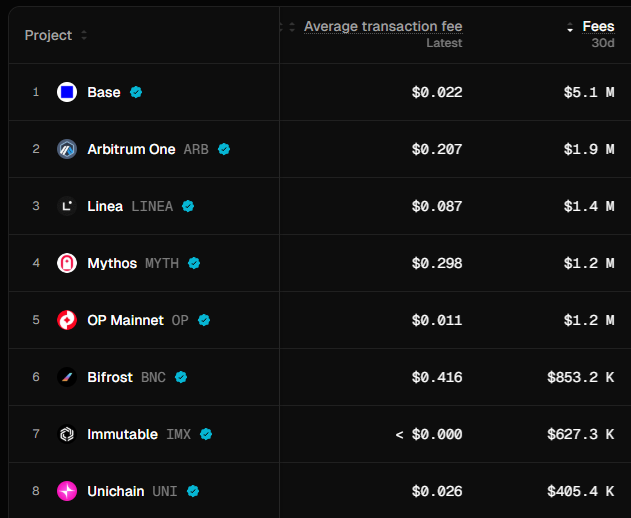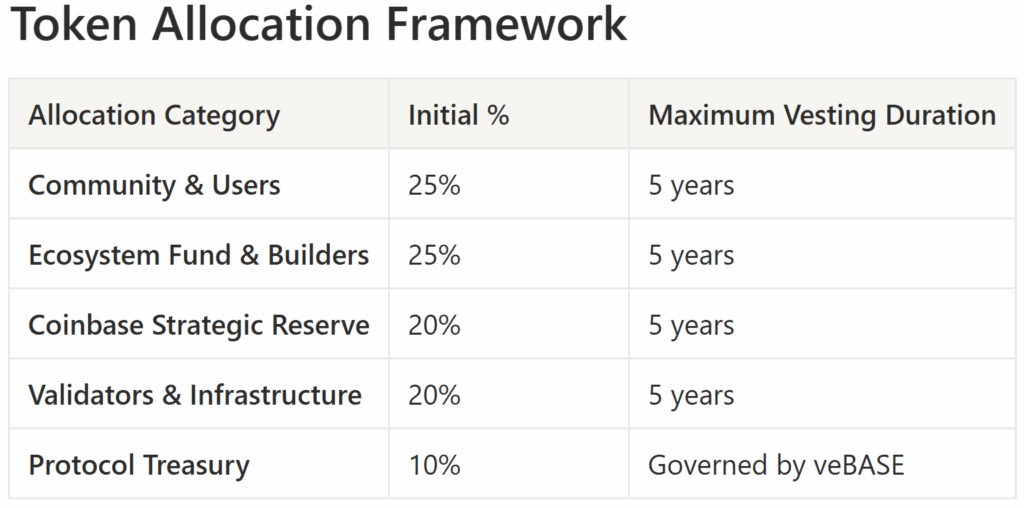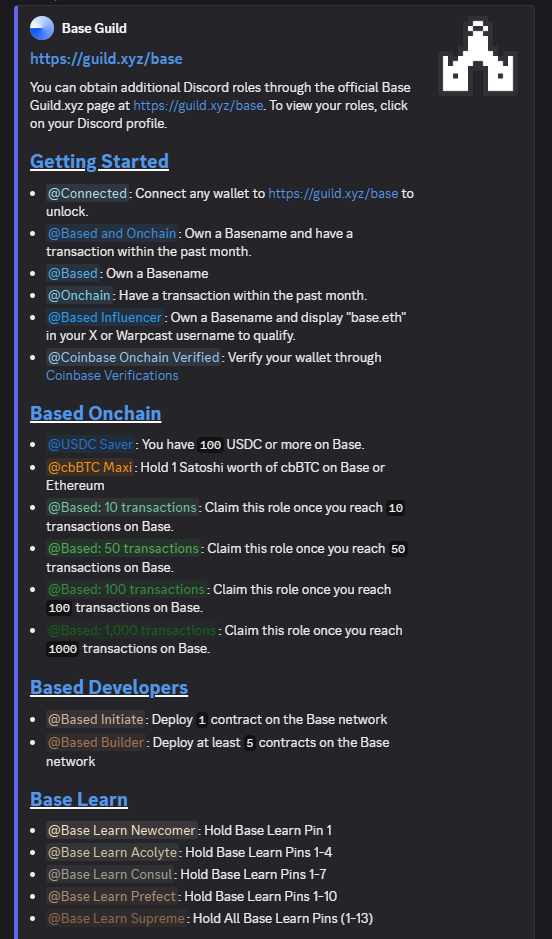BASE Token Design Proposal
This BASE token announcement represents a rare opportunity to redesign L2 economics from first principles. Let’s do it!
BASE Token Discussion: Redesigning L2 Token Economics
Layer 2s face a fundamental economic challenge: competitive pressure to keep transaction fees low undermines revenue generation and forces a race to the bottom. With a $4.95B TVL, 1M daily users, and $5.1m fees in 30d Base is the leading L2. The main reasons for this are their native connection to Coinbase, competitive low fees of just $0.02 on average txs, and a deep integration into the wider EVM-based ecosystem.

https://tokenterminal.com/explorer/projects?v=NjRlNjYwYWNjOTk1YTQ3N2JhNDNiOGQ5
This proposal outlines a solution to the question on what a token could look like for the most successful L2. It’s not just about staying ahead but about building the leading position. Key suggestion is to reduce the reliance on fee extraction as the main revenue source. Combining quote currency mechanics via proven bribing mechanisms with adaptive economics creates a sustainable value capture for Coinbase, Base, and the BASE token.
BASE Token Opportunity
Traditional L2s focus on transaction fees, missing the primary value driver for successful crypto assets. As @ mosayeri observed, “The crypto bros have long midcurved the value accrual narrative of L1 assets by arguing that the main driver is transaction fees.” ETH and SOL derive value primarily from being locked in AMM pools as quote currencies, not from gas fees.
This creates an opportunity for BASE to establish itself as the primary quote currency on whitelisted Base ecosystem DEXs. Rather than competing for diminishing fee revenue, BASE would generate demand through actual liquidity requirements across trading pairs.
The Mechanics of Quote Currency Value Accrual
Users lock BASE tokens to receive veBASE (vote-escrowed BASE), providing governance rights over fee distribution algorithms. VeBASE holders direct rewards to AMM pools using BASE as their quote currency, with distribution ratios automatically adjusting based on network health metrics. This creates alignment where ecosystem growth directly increases demand for locked BASE tokens as they’re tied to liquidity incentives.
The system builds on proven quote currency concepts similar to Virtuals while adding a vote-escrow voting mechanism similar to @aerodromefi/aerodrome-launch-tokenomics-30b546654a91">Aerodrome but without fee redistribution back to the voters from the liquidity pools. A share of the sequencer revenue is used to sustainably source the incentives voted for BASE denominated pools. This works even beyond the initial bootstrapping phase. Furthermore, unlike static allocation models, dynamic fee distribution responds to real-time conditions through fine-tuned ML algorithms. These algorithms handle analyzing network utilization, DEX volume patterns, and ecosystem growth metrics to determine the overall incentive emissions.
This mechanism would trigger competition similar to Curve Wars, with protocols accumulating BASE governance tokens to secure liquidity incentives. As Base’s ecosystem expands, more protocols require BASE liquidity, reducing circulating supply and creating natural demand pressure. Simultaneously, this approach offers the opportunity for sizable token swaps with established leading protocols on Base. This further strengthens the decentralized ownership in the ecosystem. Base can use the tokens from other ecosystems to seed own BASE-quoted liquidity pools. The collected trading fees from this Protocol Owned Liquidity (POL) can serve as a sustainable long term revenue source.
The Adaptive Economic System
Current L2 token designs use fixed distribution schedules that cannot respond to changing market conditions. BASE introduces a sophisticated adaptive system extending beyond simple fee adjustments like Ethereum’s EIP-1559.
Building on the earlier published adoption-adjusted vesting principles, BASE implements dynamic emission scheduling responding to ecosystem demand signals, through two strategic buckets:
Distribution-Focused Bucket (Coinbase Strategic Reserve, Protocol Treasury, Community & Users): Receives increased emissions during strong KPI performances to optimize value distribution when the adoption rate is high.
Growth & Building Bucket (Ecosystem Fund & Builders, Validators & Infrastructure): Receives increased incentives during weak KPI performances to stimulate development and network security when additional support is most needed.
The Growth & Building Bucket includes all quote currency pool incentives, distributed through the Ecosystem Fund to protocols using BASE as their primary trading pair. This directly aligns the adaptive emission system with quote currency value capture.
Emissions never reach zero during the vesting duration for any bucket — the system adjusts relative weighting between buckets based on market conditions and ecosystem health. Machine learning models analyze multiple factors to prevent governance bottlenecks while ensuring optimal stakeholder alignment across market cycles.
Token Allocation Framework for BASE Token

Illustrative BASE token allocations and maximum vesting durations. Note that the actual vesting durations might change dependent on the exact adaptive emission parameterization.
Key Features:
- Adaptive Emission System: All allocations use dynamic schedules with Distribution-focused buckets receiving increased emissions during strong adoption performance, while Growth & Building Buckets receive increased incentives during weak periods
- COIN Shareholder Alignment: Coinbase’s 20% strategic reserve creates direct value alignment without regulatory complications
- Progressive Decentralization: Validator incentives (20%) ensure network security in the bootstrapping phase while community allocations support sustainable decentralized ownership of BASE tokens
- Balanced Development: Equal weighting between community rewards and ecosystem development ensures both adoption and builder retention
Final allocations require extensive token engineering analysis, legal review, and community input for economic sustainability, regulatory compliance, and user alignment.
Strategic Value and Implications for Coinbase
Tokenizing Base represents fundamental transformation beyond revenue diversification. While Base currently generates modest sequencer fees (kept low for competitive reasons), tokenization could create over $4B in immediate value through strategic reserve holdings.
The current model faces limitations. Brian Armstrong mentioned the emphasis on low fees recognizing that higher fees would push users to competitors offering token incentives. This creates a revenue-versus-growth paradox.
Tokenization breaks this paradox by shifting incentives from fee extraction to ecosystem acceleration and value accrual. A 20% strategic reserve aligns Coinbase’s interests with Base’s long-term success while removing pressure to maximize fees. Token emissions fund growth without balance sheet impact, enabling competitive rewards matching other L2s incentives.
Strategic implications extend beyond immediate returns through multiple revenue diversification opportunities. Tokenization enables Coinbase to offer institutional custody services for BASE holdings, generating recurring custody fees while positioning itself as the premier institutional gateway for BASE exposure. Coinbase One integration reduces customer acquisition costs by offering BASE rewards, discounts, and platform perks to subscribers, creating stickier customer relationships and higher lifetime value.
Distribution Strategy
Distribution strategy should balance Coinbase’s customer base with Base ecosystem participants. While @ Architect9000 suggested “Airdrop only to Coinbase One members” for anti-Sybil mechanisms and customer alignment, fair distribution requires including active Base onchain users and verified builders from the Discord community.

Earned roles on the Base community Discord server can be used to gauge user alignment and commitment and be tied to individual BASE airdrop allocations.
This dual approach ensures both CEX user retention and genuine L2 ecosystem participation.
Tokenization positions BASE as institutional-grade collateral bridging TradFi and DeFi. As @ YTJiaFF noted, “With COIN backing it, BASE token would become a safe bridge connecting public companies with crypto assets.” Institutions could custody their BASE holdings with Coinbase while using these assets as both onchain collateral in DeFi protocols and offchain collateral in traditional credit markets. This dual-collateral functionality creates the first crypto token specifically designed for enterprise credit markets, enabling traditional financial institutions to access crypto liquidity while maintaining regulatory compliance through established custody relationships.
The Path to Progressive Decentralization
The transition follows a three-phase approach balancing innovation with stability. Base achieved Stage 1 decentralization out of 3 stages and once Stage 2 hits, third-party sequencers will need to be paid, making tokenization strategically necessary.
Phase 1: Coinbase maintains sequencer control while launching token incentives and community governance for fee distribution. This controlled environment proves the quote currency model with some basic KPI driven incentive distribution.
Phase 2: Hybrid model with initial set of decentralized validators requiring BASE staking, while Coinbase retains 3 permanent slots for transition stability. This phase introduces prediction market governance (@sekarl/eli5-what-is-futarchy-ba2978d5d91b">Futarchy) where veBASE holders bet on implementation success, with market-proven proposals receiving fast-track approval.
Phase 3: Full decentralization with open validator participation and complete community control. Coinbase transitions to regular network participant while maintaining strategic token holdings. Advanced cross-chain MEV coordination becomes operational, with institutional credit markets expanding into traditional finance.
Market Positioning and Competitive Advantage
BASE enters a landscape where existing L2 tokens struggle to capture network value. ARB, OP, and MATIC underperformed ETH despite significant ecosystem growth, highlighting structural problems in traditional L2 token designs. These protocols face selling pressure from token unlocks without matching demand.
BASE’s quote currency model addresses these structural issues by creating genuine utility demand through AMM quote liquidity deposits. This generates organic buying pressure scaling with ecosystem growth, moving beyond speculative utility toward essential infrastructure participation.
Competitive differentiation extends beyond the token design to regulatory clarity, institutional access, and enterprise-grade compliance. Coinbase’s regulatory expertise provides advantages that decentralized competitors cannot match, while the quote currency model creates clearer utility definitions reducing securities classification risks.
Conclusion: A Defining Choice Between Fee Capture and Exponential Value
The fundamental question isn’t whether Coinbase should launch a token, but whether they should capture constrained fee revenue or create exponential value through tokenization.
The current revenue structure suggests generation of $180M ($5m/month x 12 months x 3 years) over three years. On the other hand, a strategic BASE tokenization could create ~$4B in combined value through token allocation ($10B initial FDV x 0.2 = $2B) and value appreciation due to
- quote currency demand
- adaptive smart incentive issuance
- POL – providing revenue comparable to current sequencer fees
- ecosystem acceleration
valued at another $2B.
These are conservative estimates assuming valuation parity with other L2s and adjusting for current fee and TVL figures. Note that a Coinbase premium is not included.
This represents a significant value creation opportunity for Coinbase. The quote currency model solves the growth-versus-revenue paradox while positioning BASE as fundamental infrastructure for the expanding Base ecosystem. Early dominance due to this L2 token design creates competitive advantages that could further strengthen the leading market position of Base.
For the broader crypto ecosystem, BASE tokenization could signal further maturation of L2 economics beyond transaction fee dependence toward genuine utility-driven value capture. As @ jack_anorak observed, “BASE token is a product decision. Base wants token stimulus, and it must be neutral blockspace.”
Coinbase’s choice between constrained fee capture and exponential tokenization value represents a defining moment determining both BASE’s trajectory and Coinbase’s position in crypto.

This is a consolidated token design proposal derived from community discussions and Dr. Achim Struve’s own suggestions in collaboration with Outlier Ventures’ proprietary token design AI agent. Special thanks to @ 0xRak for reviewing this article and for his helpful comments.
Stay in the Loop
Do you want to receive weekly insights from Outlier Ventures straight into your inbox? Make sure to sign up to our Newsletter to stay ahead of the curve.
Disclaimer:
- This article is reprinted from [outlierventures]. All copyrights belong to the original author [Dr. Achim Struve]. If there are objections to this reprint, please contact the Gate Learn team, and they will handle it promptly.
- Liability Disclaimer: The views and opinions expressed in this article are solely those of the author and do not constitute any investment advice.
- Translations of the article into other languages are done by the Gate Learn team. Unless mentioned, copying, distributing, or plagiarizing the translated articles is prohibited.
Related Articles

Exploration of the Layer2 Solution: zkLink

What is Plume Network

A Comprehensive Guide to LayerEdge

Battle of Public Chains: Analyzing the On-Chain Data and Investment Logic of ETH, SOL, SUI, APT, BNB, and TON

What is Conduit
